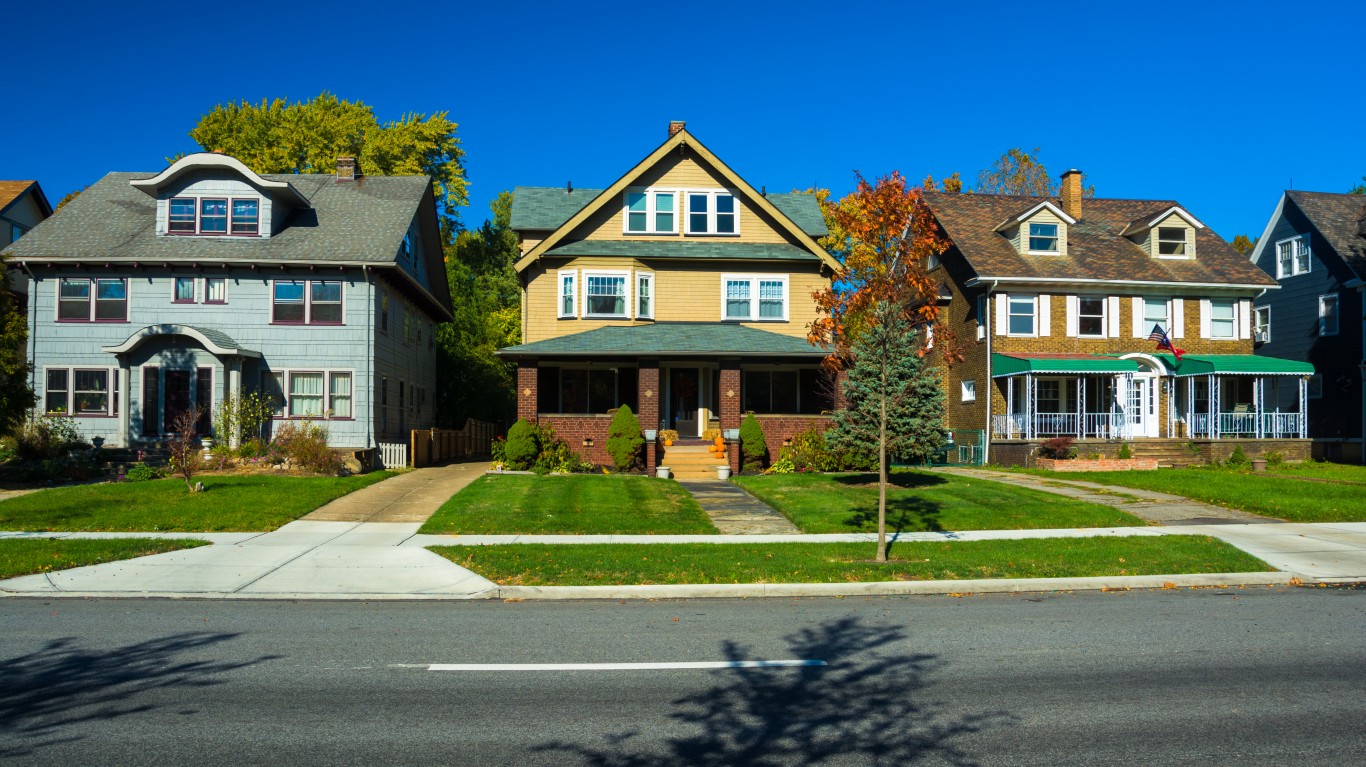
The COVID-19 pandemic precipitated a surge in home sales across the country as people looked to flee densely populated cities, looking for more room and space for the entire family. The high demand for homes has coincided with a spike in new home construction, which reached its highest point in more than a decade. The increased supply was not enough to offset demand, and home prices surged.
The history of the U.S. housing market has been marked by periods of rampant building and of lulls, even as the population has expanded relatively steadily. Given this recent increase in demand, new home construction would have to rise considerably to reach the rate at which they were being built in the early 2000s, the period immediately preceding the subprime mortgage crisis.
The American housing market has not only been through substantial fluctuations in the number of housing units being built but also in the size of the homes built. Changing family size, rising incomes and suburban expansion have all led to changes in the size of the typical single-family home.
To determine how the size of homes has changed over the past century and to determine the average size of a home in 1920, 24/7 Wall St. determined the average size of a newly constructed single-family house between 1920 and 2017 by reviewing official U.S. Census figures and providing our own estimates for years the Census Bureau did not release this data.
In 1920, 100 years ago, the average floor area of a new single-family home was 1,048 square feet. The average floor area per person was 242 square feet There were 247,000 new homes started. And GDP per capita, inflation-adjusted, was $10,164. By contrast, in 2017, the most recent year we reviewed, the average floor area of a new single-family home was 2,631 square feet. The average floor area per person was 1,036 square feet. New homes started reached 1,152,900, and GDP per capita, on an inflation-adjusted basis, was $55,790.
To determine the average size of a newly constructed single-family home between 1971 and 2019, 24/7 Wall St. used survey data from the Census Bureau’s American Housing Survey and Characteristics of New Housing series. For the years 1963 and 1970, we used data from the U.S. Department of Housing and Urban Development’s 1969 “Characteristics of New One-Family Homes” construction report. For the years 1940, 1950 and 1954 to 1956, we used the Bureau of Labor Statistics “New Housing and Its Materials 1940–56” report.
For all other years, we estimated the average size of a newly constructed home using construction data on residential housing starts and total residential floor space constructed in a given year from the Census Bureau’s annual Statistical Abstracts of the United States and its “Historical Statistics of the United States, Colonial Times to 1970” report. We took the quotient of total residential floor space and total residential housing starts and made adjustments to account for the inclusion of multifamily housing units and exclusion of various states in the national tally of total floor space constructed.
We also adjusted housing starts to better approximate housing completions. Average household size also came from the Census Bureau. Gross domestic product per capita figures for years 1929 to 2019 are from the Bureau of Economic Analysis. GDP per capita figures for years 1920 to 1928, which were not available from the BEA, came from estimates by the Maddison Project.
Click here to see the average home price the year you were born.
Take Charge of Your Retirement: Find the Right Financial Advisor For You in Minutes (Sponsor)
Retirement planning doesn’t have to feel overwhelming. The key is finding professional guidance—and we’ve made it easier than ever for you to connect with the right financial advisor for your unique needs.
Here’s how it works:
1️ Answer a Few Simple Questions
Tell us a bit about your goals and preferences—it only takes a few minutes!
2️ Get Your Top Advisor Matches
This tool matches you with qualified advisors who specialize in helping people like you achieve financial success.
3️ Choose Your Best Fit
Review their profiles, schedule an introductory meeting, and select the advisor who feels right for you.
Why wait? Start building the retirement you’ve always dreamed of. Click here to get started today!
Thank you for reading! Have some feedback for us?
Contact the 24/7 Wall St. editorial team.




